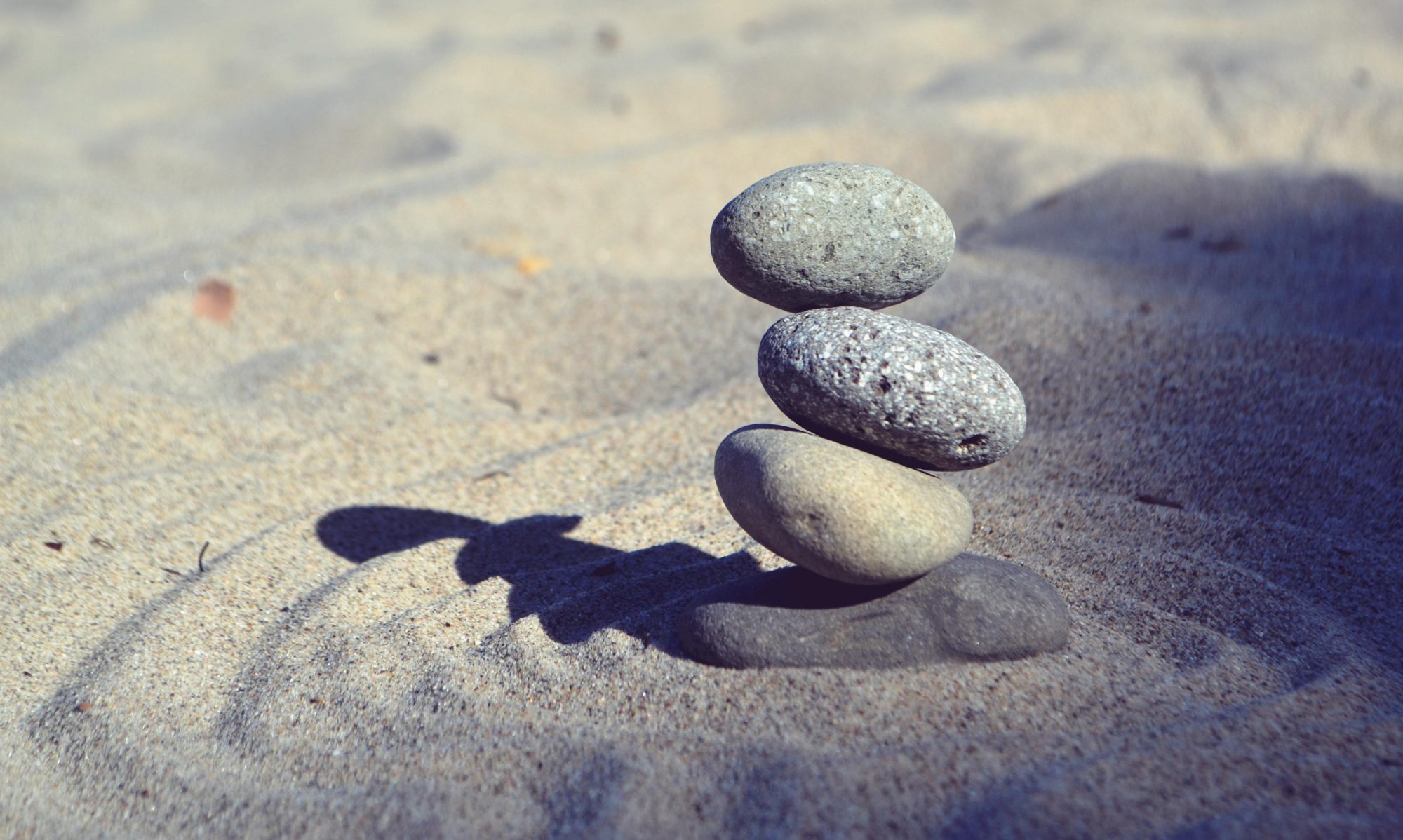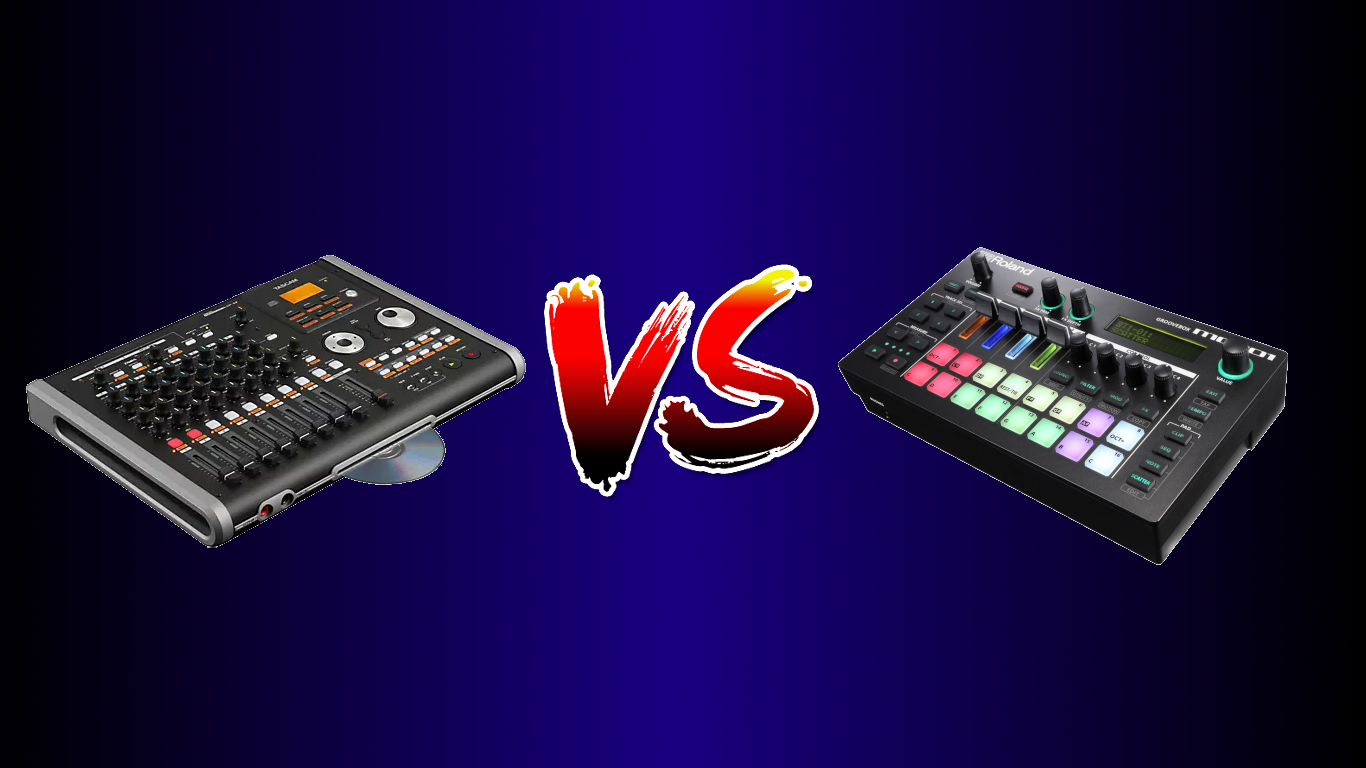As I recently wrote about, I’m looking at getting away from computer-based music production, for creativity’s sake. I’ve recognized that my brain just doesn’t come up with original ideas when I’m staring at a computer screen.
So understandably, my attention has turned to finding alternatives to making music with a PC. And I’ve discovered there are a lot of alternatives out there- which is both a blessing and a curse.
There is almost certainly a device out there that will serve anyone’s need for music production. But with so many choices, the problem becomes: which one do you choose? What style of device suits your creative workflow, when you don’t know what that is yet?
So, based on recommendations of a few DAW-less music producers, I started looking into some of the more popular choices. And I quickly found out most of them are geared towards hip-hop and EDM producers- guys that make beats- and not traditional musicians.
Would it be possible for me to use one of these “groove” boxes to produce actual recorded material? What if I wanted to use some elements of those machines, and record audio tracks?
Since I’m a technical writer by trade, I do what I always do when I’m trying to figure these things out- I read the manuals. Short of buying and selling each one of these (which I can’t afford) this is the next best way to figure out what feature set would work for me (assuming the manual actually doesn’t suck- which some of them do). So I looked them up, and spent a couple of hours downloading and reading every manual I could find on the units I’d found. Yes, I actually read ALL the manuals. The list included:
- Roland MC-707 (and MC-101)
- Elektron Digitakt
- Tascam Model 12
- Tascam DP-03SD/DP-02/DP-01FX
- Zoom R12/R24
- Novation Circuit
- Akai MPC One
- Akai MPC X
- Korg Volca series
- Roland MV-1
- Empress Zoia
Some of these devices are strictly multi-track recorders, some are basically drum machines, and others are a combination of performance tools, loopers, effects, sequencers, and so on. There’s a HUGE range of functionality represented here, which makes my job to find the right one (or combination of them) even harder.
As I laid out previously, there is a process for decision-making when looking at these things. What are my needs? What can I compromise on? What is my price range? So let’s go through each of these and see what I found.
Needs – What do I need in a music production station? It has to have:
- Ability to record, edit, and master external audio
- Either internal samplers and synths, or MIDI to sync external machines
- Total package (recorder/synths, or whole unit) cost less than $1000.
- Either have good internal effects, or some sort of send/return loop to add them to tracks
- At least 8 tracks
Wants – The things I’d like to have, but aren’t deal breakers:
- Looping functionality
- Comprehensive onboard effects
- Able to sequence external MIDI devices
- Song mode (programming an entire song)
Contenders
The first machines I looked at were simple multi-track recorders, by Tascam and Zoom. These are what most people think of when you say “home recording studio” because they’ve been in the industry, and marketed as such, for decades.
First I looked at the Tascam DP-03SD, Tascam Model 12, and the Zoom R12/24. These units, as standalone recorders, are perfectly good and usable. They all come with built-in effects, top-quality recording, lots of tracks, and easy workflow.
The problem I ran into with these units is that they don’t have any sort of instruments in them- and they don’t have MIDI to synchronize drum machines, synths, or sequencers. That’s right- none of the new multi-track recorders you can buy have MIDI, except for the Model 12. And the Model 12 doesn’t have track edit functions, and therefore can’t be used to produce an actual album by itself. It’s designed to only mix and record live sound, then pass it off to a DAW. So none of these units would work for me, since I plan on using a drum machine.
Caveat: the older Tascam units have midi. They only recently removed it from their lineup. So a good low-cost option would be to get an older DP-02 with MIDI and record with that, and some external devices.
Grooveboxes
Next, I stumbled upon all-in-one devices made for beat producers, called “grooveboxes.” I know the legendary Akai MPC line has been used as a beat sampler for ages, and is rightfully considered the industry standard. But there are some newer units that hit some really nice feature/price points.
I looked at the Roland MC-707, Elektron Digitakt, Akai MPC One, Novation Circuit, and the Roland MV-1 Verselab. These all are marketed as “grooveboxes” and “all-in-one production stations” which is true, if your production is limited to hip-hop beats and electronic music.
These units are actually quite good, with onboard synths, sampling, basic looping functions, MIDI sequencing, and so on. On the surface, they look really tempting! But again, they need to be able to record and edit full-length audio, which only the MPC One and the MV-1 Verselab can do.
Furthermore, the MPC One can record up to 8 audio tracks, while the MV-1 can only record one- it says it can record “16 takes” though it’s not really made clear how that works in the manuals. What it means is it can record 16 “clips” of audio, they all must be used in 1 “vocal” track, and total vocal recording time on the MV-1 is limited to 12 minutes mono, or 6 minutes stereo.
Looking at the MC-707 and the Digitakt, would it be possible to use them as multi-track recorders, by simply recording vocal takes one section at a time, as samples? Realistically, I’m going to say no. It might be possible- maybe- but if at any point you want to record a mostly acoustic song, you’re going to run out of sample space. Even with the MV-1, you’re very limited to audio you can record.
Out of the machines in this group, the MPC One is the only one that could reasonably produce a completely acoustic song. But the onboard synths are not nearly as flexible as the Roland or Digitakt units, and the MPC is heavily tied to software plugins- which I’m not a fan of. The onboard effects are not spectacular. It has a large touchscreen for the majority of its functions, which is part of the thing I’m trying to get away from. It also doesn’t have an external effect loop, like the MC-707, or an XLR mic input like the MV-1. It is really tempting, because it hits so many of the tickboxes. But ultimately, I just don’t know if I’d be happy with the MPC One, and if I have to buy more outboard gear to get it where I want it, that defeats the purpose of buying an expensive all-in-one unit.
I briefly looked at the MPC X, which can do just about anything you could imagine- but it’s $2500, doesn’t realistically do much more than the MPC One (certainly not enough to justify 3X the price), and is still a graphical screen-driven UI.
Idealism
What would be perfect, in my eyes, for a home recording studio would be the Roland MV-1, but without the limitation of having to only use 1 track for vocals. The machine has 8 tracks that can be used in different ways, but it limits you in that you can only have 1 vocal track, 2 looper tracks/5 beat/instrument tracks, or 1 Vocal and 7 beat/instrument tracks.
For me, the ideal would be 4 beat/instrument tracks, and 4 vocal/guitar/bass/sax tracks. But the only way to do this would be to expand the MV-1’s RAM considerably. I’m hoping at some point in the future Roland realizes the potential of a platform like this, and adjusts accordingly. Some sort of combination of the MC-707 and the MV-1 would be awesome. Can you imagine an 8-track audio recorder with studio-quality effects, samplers, and synths built in? It would be amazing! But as they stand now, I can’t say I could really use either one of them as a complete standalone recording workstation.
Conclusion
As I suspected, there really isn’t anything out there that does everything I want it to. You’d think after years of thinking outside the box, I’d be used to it.
The last unit I didn’t talk about is the Roland MC-101. It’s very much like its bigger brother, the MC-707, and has all the same effects, samples, and synths in it. It only has 4 tracks, and can’t record external audio. BUT…
If I combined an MC-101 with a used Tascam DP-02 it would be the best of both worlds. I could record up to 8 audio tracks, or up to 8 drum/synth/sampler tracks, or any combination- I just would have to record them 2 at a time, max.
The MC-101 sells for about $500, though you can pick them up slightly less than that. And a used DP-01FX or DP-02 recorder sells for about $250 to $300. Both of these together would be able to produce and record pretty much anything I could think of.
So, in the future, I will be scrounging eBay and Reverb for the best deals on a used Tascam DP-02, and can pick up an MC-101 whenever I get the chance. These two pieces cover each other’s shortcomings, and overall, I think would best fit what I’m trying to do.
UPDATE: I ended up buying a Tascam DP-02 for $200. For now, I’m going to use Caustic 3 on my phone as a sequencer, synth, and drum track machine (it’s plenty capable). But eventually I’m going to want a dedicated hardware version of Caustic, which would either consist of a 10″ tablet with a control surface, or a Roland MC-101. Considering I can get a tablet and control surface for less than an MC-101, I very likely could go in that direction. I’ll update as that happens!

